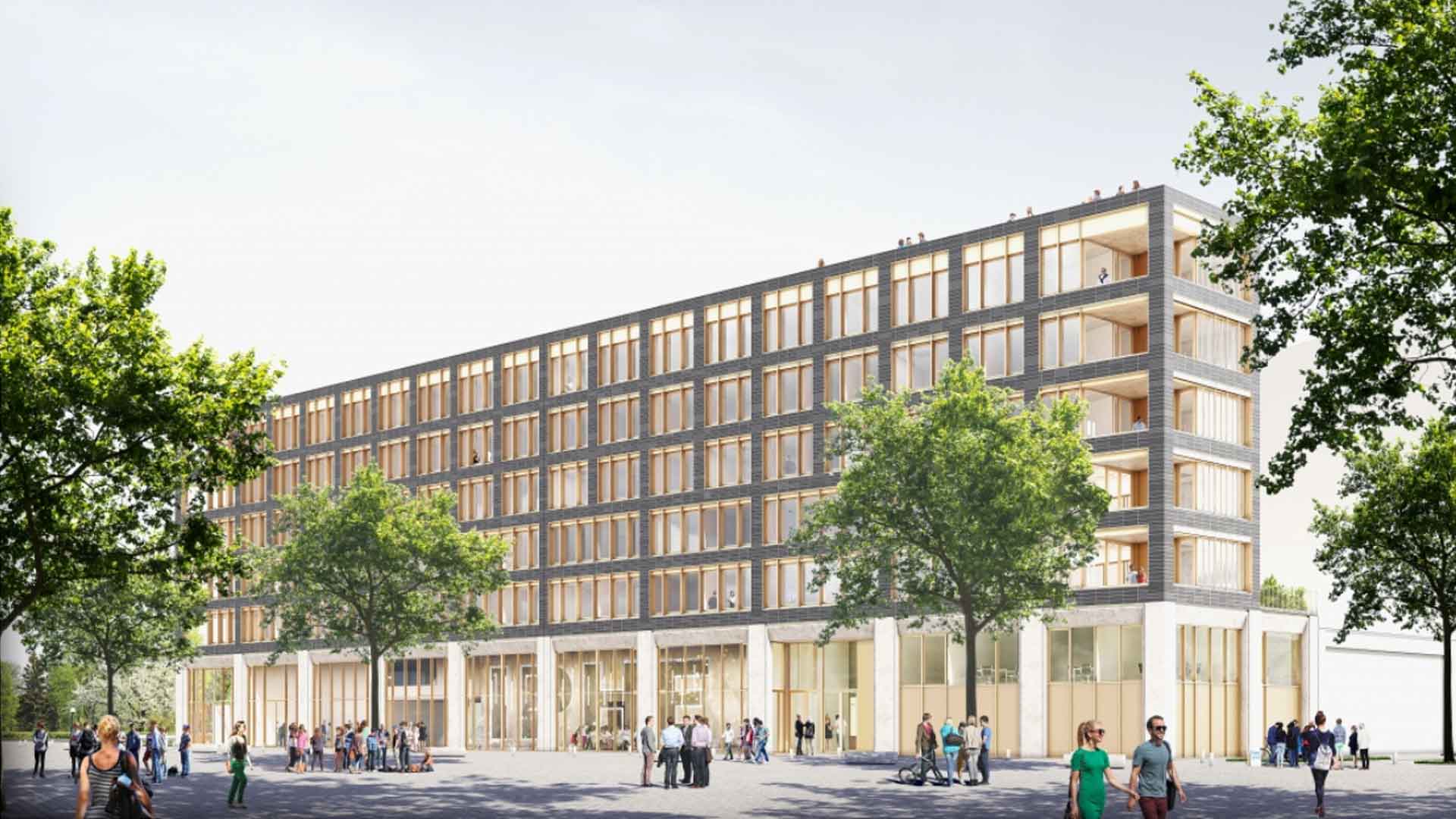
After the emergency, the recovery. In spring 2021, Paris Region authorities and the French state agreed on a 13.8 billion euro stimulus plan. The plan, which is the largest in France, focuses on three priorities: ecological transition, economic support and social cohesion.
Citizens today expect to live in breathable, healthy and resilient cities. A city must offer friendlyspaces and allow people to walk and cycle safely. They aspire to homes with outdoor areas, ease of movement around their city, and healthier materials. The transformation of the former hospital Saint Vincent de Paul into an eco-district is emblematic of these aspirations. This project is built around two new infrastructures: an art and solidarity centre and a mobility centre. Covering nearly 4,000 sq. m., this innovative model of a central facility developed by Sogaris is intended to pool parking, mobility services and local logistics for the entire eco-district. Buildings on the 3.4-hectare site have been renovated and extended using a frugal conservationist approach while preserving extensive green areas and maximising ground permeability. Prior to the start of the works, the community scheme "Grand Voisins" organized a temporary occupation of the site, offering a space for young entrepreneurs as well as a space for emergency housing and social inclusion associations. Half of the site is now devoted to social housing schemes affirming the inclusive vocation of this outstanding site in the heart of Paris.
The pandemic also made health a major issue. In Carré Sénart, a medical centre has been open since 2019 with 54 medical practitioners in twenty specialist fields. An extension is planned with more medical and surgical specialities, along with a CT scanner and an additional MRI scanner.
Alternative ways to live and work
Remote working has already attracted many young entrepreneurs and nomad employees and the phenomenon is accelerating. Real estate has anticipated this trend. For example, Homwork, the Université-Gare business park in Lieusaint, offers bioclimatic wood buildings that combine offices, light industrial space and housing with meeting areas and shared roof tops. The benefits from bringing work closer to home are twofold: people have more free time and commuter’s greenhouse gas emissions are reduced.
- 6 turnkey industrial sites in Paris Region, is a total of 270 Ha
- clusive and green recovery plan for Paris Region, up to 100 billion euros, including 13.8 billion for Paris Region development projects
- 100 innovant eco-districts
- + 600 startups, mostly in the deeptech field
- + 300 public and private research institutes and laboratories
Commercial real estate is set to change in Paris, with the conversion of vacant offices being the theme for the third round of the "Reinventing Paris" architecture competition. The buildings capacity to convert, evolve and adjust has become crucial in today’s circular urban policy in which we no longer demolish. We transform. In a city as attractive and dense as Paris, the drop in demand for offices, estimated at 20%, is an opportunity for the housing sector. Paris&Co, the urban innovations platform for Paris Region, is backing four projects - Lab14, Caracol, UnityCube and FlatnYou – which are part of this dynamic with their innovative and inclusive rental solutions.
A new industry
The Covid crisis has accelerated the relocation of manufacturing activities by highlighting the importance of supplying city centres, particularly with health products such as masks and medicines. However, this does not mean that we are witnessing a resurgence of the industrial smog of the past: the factories of the future include environmental protection in their specifications and incorporate the most advanced technologies. The EPA Sénart, for example, is innovating by proposing a "ready-to-build" industrial envelope with a complete BIM that only needs a few months to be operational. This 4.0 factory aims for zero carbon emissions thanks to the recycling of raw materials and the perfect reversibility of the production tool. Paris Region has identified 26 turnkey sites suitable for industrial activities that together have a potential to create 22,000 jobs. In addition, the initiatives focus on the community of innovators, as they will provide the necessary resilience in times of economic crisis and find answers to the major challenges of the future. In this respect, Paris-Saclay is a concentration of the best in the world in terms of innovation, as it is home to 15% of public and private research in France and 40% in Paris Region. Innovation brings with it new needs in terms of business real estate and in particular the development of hybrid products where offices, laboratories, workshops, and production prototypes are all under one roof.

The supply chain, essential to industry, is also committed to the ecological transition. Sénart again stands out, with its third environmentally responsible multi-fuel filling station supplying biogas produced by methanization, electricity and, very soon, hydrogen. In Paris, P4, a Sogaris development located between Paris and Seine Saint-Denis is another vector for transformation. This distribution platform, MIPIM Awards finalist in September, was built on an unused site under the Paris ring road and will accelerate the ecological transition of goods transport. Similarly, in the centre of Paris on “Grenier Saint-Lazare” street is the “Immeuble Inversé”. It is a former underground carpark that has been converted by Sogaris into an urban attic for the inhabitants of this district and is dedicated to local logistics.
The crisis has become an opportunity. Paris Region is striving to become even more attractive, innovative, green and inclusive. Because business success is nothing without art de vivre.

